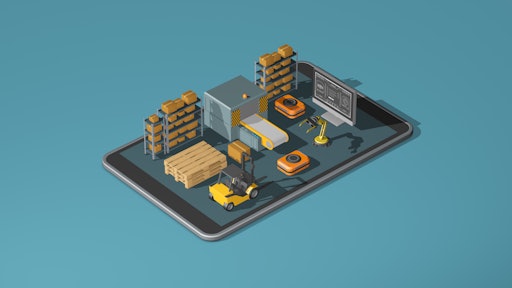
The most important resource in any warehouse is data. It gives you a valuable assessment of the current functions in your warehouse and where to go from there. Without the right systems in place to gather the information, however, valuable data goes to waste, leaving warehouse operators to make uninformed decisions.
Until recently, warehouse automation was commonly thought of as installing a hardware system and then leaving it in place and untouched for several years. This isn’t the case anymore, as companies who truly "win" with automation, whether software or hardware, are those that take small, short-term steps with technology, then rapidly innovate and iterate.
But how do you lay the proper groundwork for automation success?
As warehouses become increasingly more digitized, it's important to build a robust software foundation in order to more successfully integrate the new automation technologies that will continue to optimize workflows.
Introducing Digitization
In general, automation begins with the same problem statement – a lack of data digitization, which is needed to execute automation in warehouse facilities.
The vast majority of warehouses in the United States are still paper based, maybe using Microsoft Excel, for example, to track inventory. Because of this, a good first step for companies seeking to automate is to bring in inventory tracking software such as a Warehouse Management System (WMS). This kind of solution helps control inventory, manage order demand and streamline facility work.
What makes WMS technology an easy go-to for entry to automation is that it’s already a proven solution. In essence, the WMS enables a warehouse to establish its “digital data backbone” by leveraging digitization and access to relevant data. This allows warehouse operators to then optimize their execution, because now they have a foundation allowing them to receive insights about the health and efficiency of their facilities and use those insights as a decision-making tool.
After implementing a WMS, the next step in introducing warehouse digitization is to look at how inventory throughput and accuracy can be increased. To achieve this, complementary technology should be brought in. Many companies assume that can only mean robots, but that may not be the case in every situation. Sometimes, the solution may be as simple as introducing a voice-based picking technology, such as a headset that informs employees of which products to retrieve, how to collect them and where they need to go.
Another option that can be implemented prior to highly sophisticated software or hardware solutions is providing multilingual support to staff. No matter where your warehouse is in the U.S., such support can immediately accelerate time to value for all employees by increasing accuracy and consistency in execution to achieve greater facility throughput.
Once these types of easy, software-based steps have been accomplished, warehouse operators will have better throughput visibility throughout their facility and can deploy additional technologies that maximize overall efficiency and employee success.
Preparing for Tomorrow
Beginning with digitization in your warehouse can be reflected in a “crawl-walk-run” approach to automation and defined success. Digitization as a starting point makes it possible for there to be no untracked work or inventory in a facility; there’s full traceability into the workflows and efficiencies operating throughout the warehouse.
That data also provides the clarity you need to then create a brokerage of information between your current technologies and additional hardware or software you are ready to deploy. Availability of data is paramount to the certainty that every system in the warehouse can be optimized by the other systems.
Seamless integration across existing and new solutions is also key. Reflecting this trend, more companies are moving away from their homegrown WMS and towards well known sustainable platforms that have proven technology and easy interoperability with other technologies in the space.
Lastly, it would be a disservice not to address artificial intelligence (AI) as the near future and “run” portion of automation. AI software definitely has its place in everything supply chain and logistics and will become increasingly important to automation. However, warehouse operators should keep in mind that the technology is only as good as the model of data given to it. It's tempting to run AI solutions immediately, but the technology is most effective when given large data sets to iterate upon. Digitization of data, regardless of whether it’s inventory or labor, entered into an AI model can help it make more intelligent suggestions and provide optimization opportunities.
But those days are yet to come. For the short-term, AI will help operators understand and predict the flow of their facilities more accurately and allow teams to be nimbler with their solutions. It will assist the people in the facility before it helps the machines.
Companies seeking to enter or expand automation must shift their mindset to "small wins every day." This can mean starting with the implementation of one software solution, observing its impact and then adjusting prior to introducing another technology.
The world has become increasingly reliant on technology. Warehouses that invest in digitization now will reap the benefits in years to come.


























